
We collect basic website visitor information on this website and store it in cookies. We also utilize Google Analytics to track page view information to assist us in improving our website.
If you’ve ever run laps, you’ve probably bemoaned the fact that soccer fields are so large. Luckily, we have air supported domes to create indoor spaces large enough to house a soccer field, but why do they need to be so big? Who decided that a soccer field should be the size of, well, a soccer field?
It might surprise you that soccer actually started out on a much larger scale. Somewhere around the 9th Century in England, the game would span an entire town as everyone would try and kick a pig’s bladder from one landmark to another.
But the modern field as we know it today began to take shape in the late 16th and early 17th centuries when soccer goals were first described.
In 1863, a group of English schools and clubs met up to decide on official rules for the game of soccer (or football as it was known). They published the original 14 laws of the game, one of which standardized the field of play.
In the original laws, the field (or grounds as it was then called) could be up to 100 yards wide and 200 yards long. After that, the modern shape of the soccer pitch took shape, with lines being added in for the boundaries, middle, and penalty box. The modern goal was standardized to 8 feet high and 8 yards long.
Did you know, though, that there isn’t one standard size for a soccer pitch? You’d think that since the first laws were set, someone at some point would have defined a single standard field size, but you’d be wrong.
The FIFA regulations for a soccer field states that there are acceptable ranges for the width and length of the field. The field should be rectangular in shape and be between 100 yards and 130 yards in length (90m to 120m) and 50 to 100 yards in width (45m to 90m). Fields for international matches are a little bit more restrictive and need to be 100 to 110 meters in length and 64 to 75 meters in width.
Interestingly, this means that most soccer fields are wider than standard American or Canadian football fields. An American football field has a standard width of 53 1/3 yards, and Canadian football fields are slightly wider at 65 yards.
So, while a football field does fit within the parameters of a soccer field, a pitch that’s created for soccer would most likely be larger than a football field.
Because two different soccer fields might have different dimensions, it creates an added challenge for dome building. One soccer dome might need to be slightly larger than another soccer dome, simply because the field itself is a little bit larger. It’s a good thing that each dome is custom designed and planned out to make sure that there’s enough room to cover your field, however big it is!
Have you ever wondered what makes a soccer ball different from any other ball? Despite the visual similarities between air domes and the balls of sports played within them, there’s plenty we don’t know on the subject, so we did a bit of research to find out: how did soccer balls come to be?
There is a good amount of history to the soccer ball as we know it today and if you want to read up a bit more on the subject, check out SoccerBallWorld.com. The site is an encyclopedia of everything you might want to know about soccer balls.
Soccer balls first appeared when humans first started kicking around ball shaped objects. Of course, rubber had yet to be invented so people had to kick around anything that they could find that was round. Random objects, bits of animals, even human heads were kicked around for fun (although the owner of said head, presumably, was not having much fun.)
Then we began making soccer balls. Before the 1800’s invention of rubber, balls were commonly made out of inflated animal bladders, with a leather covering to maintain the shape.
Charles Goodyear, yes that Goodyear, invented rubber in 1836, and with that invention followed the rubber bladder for soccer balls in 1855. The rubber bladder could be made the right shape—a much better alternative to trying to find an animal bladder with mostly the right shape. Of course, rubber was expensive so most balls were still made from animal bladders, but rubber balls were better and produced a more predictable bounce.
Fast forward a touch, and several more changes to the ball were made. Rubber bladders became common, the bladder got stronger, the balls were standardized, and soccer grew in popularity.
Now that the inside of the ball was up to the job, changes could be made to the outside of the ball. While still made of leather to be able to withstand the abuse of being kicked around, the way the leather was stitched together changed.
In the 1900’s the leather layer was made up of 18 strips, stitched together as six panels of three strips each. Similar to the look of a present day volleyball.
The next major changes happened after a few decades when it was time to change the leather layer of the ball. The leather, while strong and durable for what was available, would still begin to break down over time, as well as absorb water when playing in the rain. The solution was synthetic leather.
Shortly after is when the present day look of the soccer ball came to be. By using small leather patches, ball designers modeled new ball after the “Buckminster Ball” or Buckyball. This design comes from Richard Buckminster Fuller, an American architect. This shape would later become important in other fields besides soccer, like chemistry.
A Buckyball consists of 20 hexagonal patches and 12 pentagonal surfaces. On a traditional black and white ball, those pentagonal sections are the black patches. Have you ever wondered why the design and colouring is so?
The black patches are there to help the players perceive swerve and the trajectory of the ball!
So the next time you’re playing soccer inside of a Farley soccer bubble, know that there’s more history and just as much brain power spent perfecting the ball under your feet, as the dome over your head!
Who first thought of the idea for inflatable buildings? We’ve written about the first person to actually design and build an air structure, David Geiger, but he wasn’t actually the first person to think of the idea—only the first to put it into practice. So who did come up with the idea, then?
Well, as with any invention, it’s hard to say who first came up with an idea, but it’s easy to figure out who first submitted patents for it. In the case of inflatable structures, the first U.S. patent was submitted by a gentleman named Woldemar A. Bary, way back on April 28th, 1955. The patent itself was accepted (presumably) on June 3rd, 1958—a full 12 years before the unveiling of Geiger’s air structure at the ‘70s World Fair.
There really isn’t too much info out there about Woldemar, but some careful Googling revealed a few mentions. A summary of his life exists in the archives of Hope College.
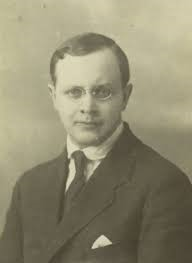 Woldemar was born in 1887 and, although his father was an engineer from America, he was raised in Moscow. This meant that the Russian Revolution, which took place in 1917, heavily impacted Woldemar. As a young man, he found himself as a part of the White Army, the resistance force. Because of his involvement in the resistance, he was forced to flee Russia to America—which he did, while disguised as a woman.
Woldemar was born in 1887 and, although his father was an engineer from America, he was raised in Moscow. This meant that the Russian Revolution, which took place in 1917, heavily impacted Woldemar. As a young man, he found himself as a part of the White Army, the resistance force. Because of his involvement in the resistance, he was forced to flee Russia to America—which he did, while disguised as a woman.
Details of Woldemar’s life are sparse but we do know that Woldemar served as the vice-president of Sikorsky Aircraft Corporation. Sikorsky are notable for being among the first companies to build helicopters for military as well as civilian use.
We’re not sure what inspired Woldemar’s invention of an air supported structure, but he had enough interest in the idea to submit a patent application for the idea in 1955. The images that he submitted for his patent quite clearly show structures that resemble those that The Farley Group builds and maintains now, over 60 years later.
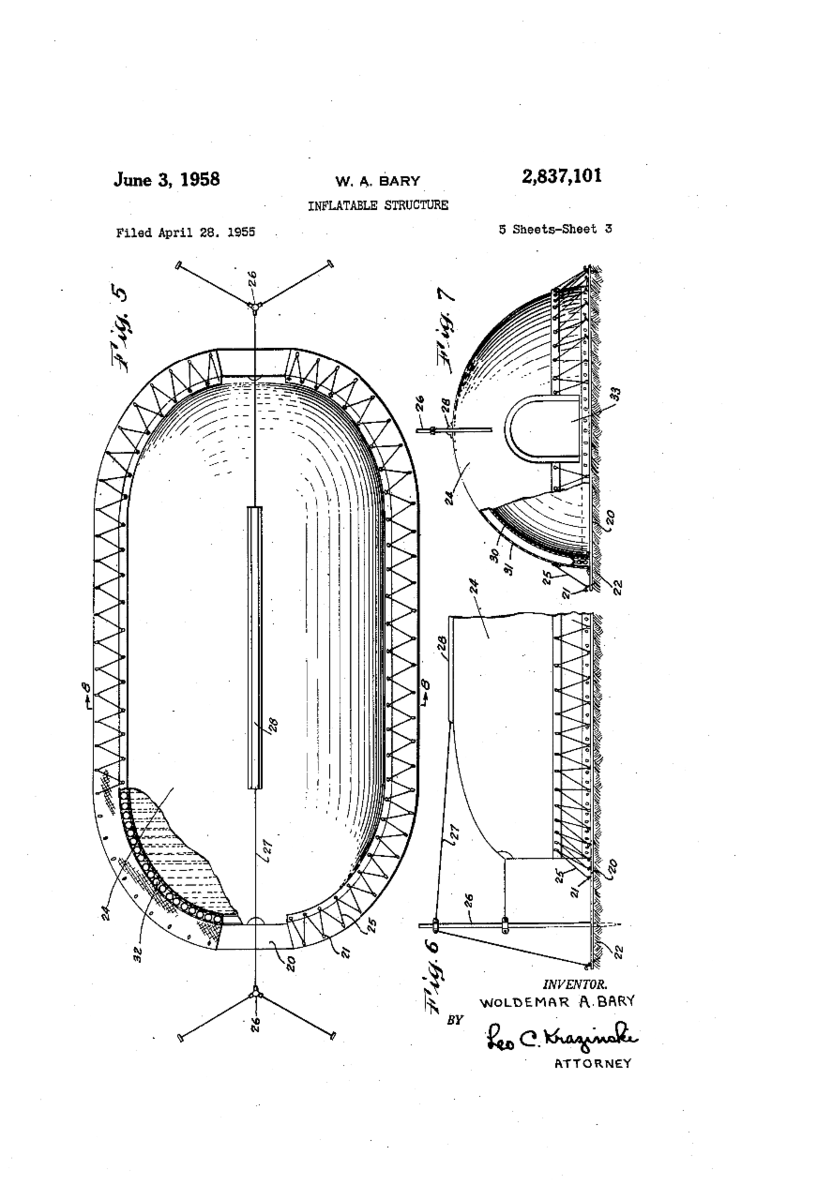 |
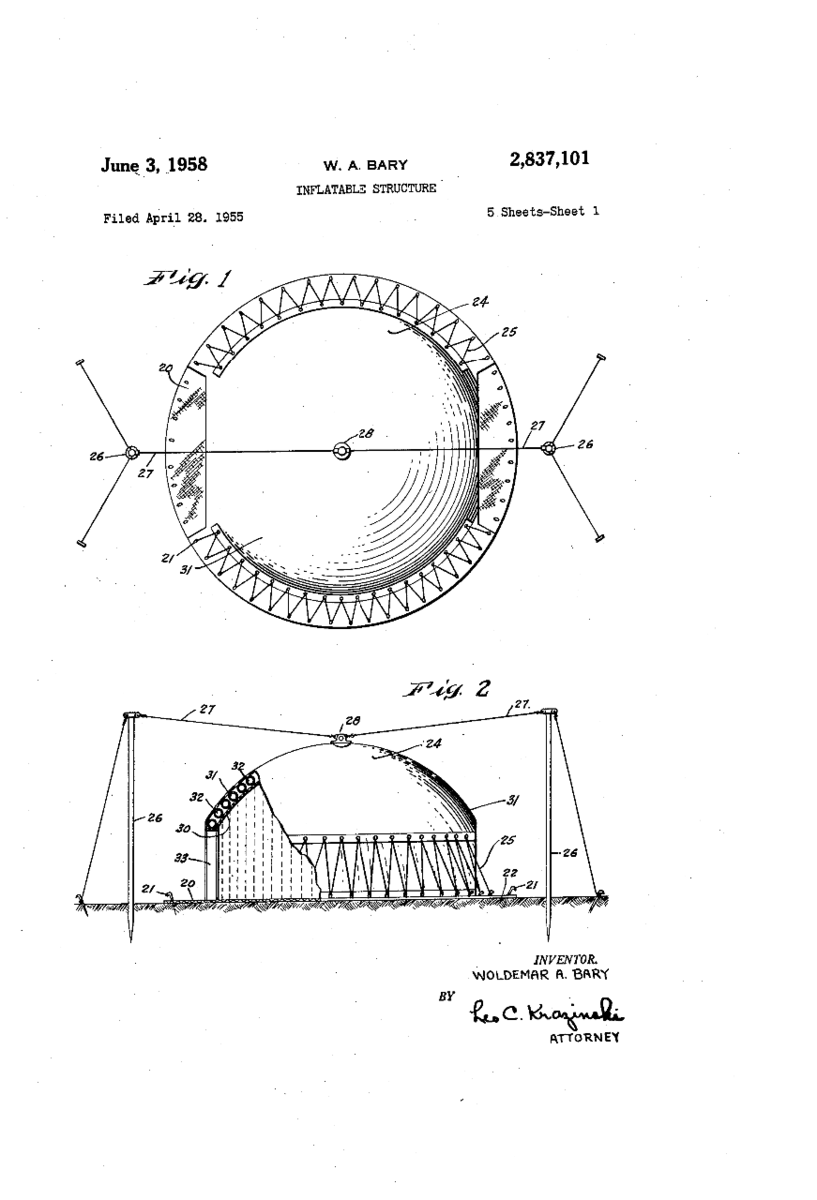 |
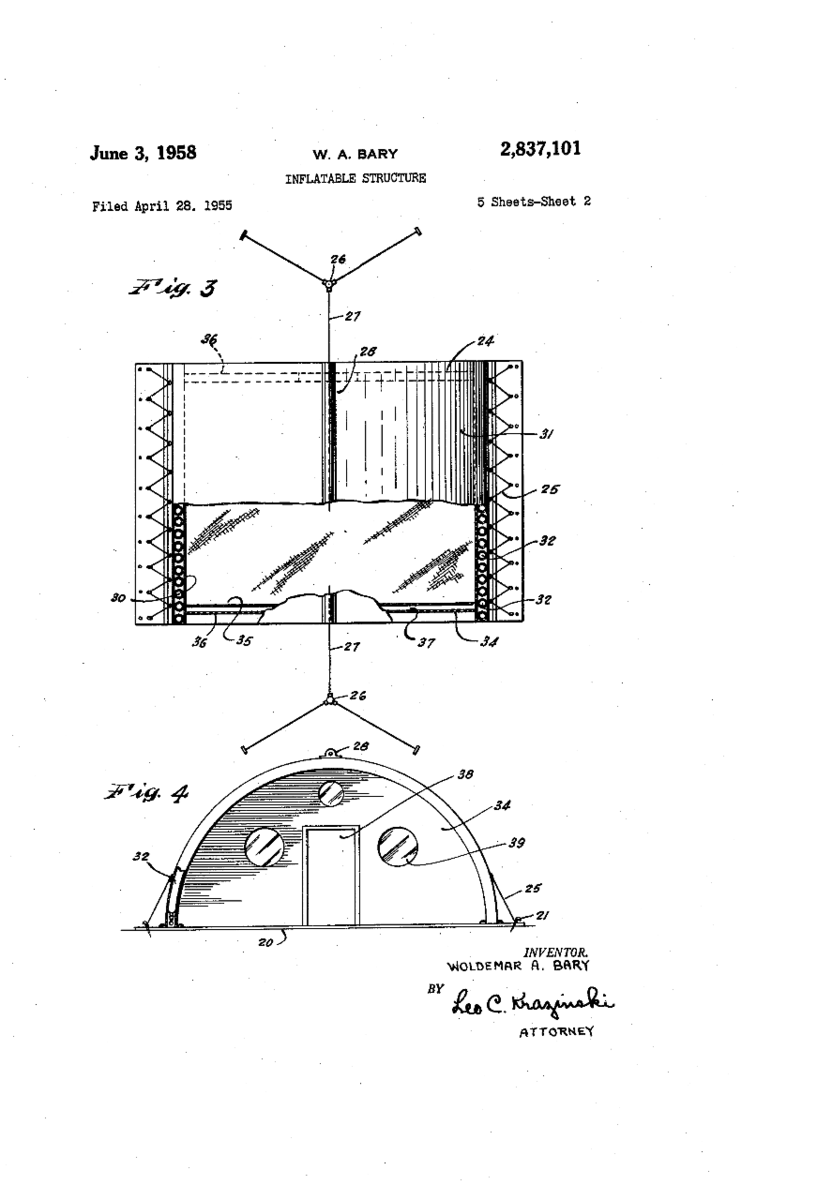 |
Reading his patent, it doesn’t seem as though Woldemar foresaw the most popular use of inflatable structures in the 21st century. In his patent, Woldemar stated that the structures would be ideal for “sheltering or housing personnel or animals or protecting equipment, apparatus and supplies, as well as plants…” While domes are still used for warehousing, storage, and manufacturing, he makes no mention of sport or multisport domes—now the most common use of domes.
Despite not being the first person to actually create an air dome, he did see the first structures built by others. After David Geiger created the first air supported structure, the 70’s saw other domes go up around the world—including the first North American domes of Ralph Farley. Woldemar would have seen these prior to his death in 1979 at the age of 92.
Woldemar’s original designs laid some of the groundwork for air supported structures as they are today—despite the fact that Woldemar himself, never fully realized his own designs. The fact remains, though, that Woldemar is a key figure in the history of air supported structures and his contribution will forever be recorded in the U.S. patent records. The Farley Group’s air structures may take Woldemar’s designs and function to the next level, but his unique ideas laid much of the groundwork.
As good as meteorologists are, the weather will always impact on any sport that’s played outside. Of course, the solution is to move those sports inside into an air dome! But not everyone can be so lucky, and there have been many moments that went down in sport history as being crazy weather events.
We’ve already covered the Fog Bowl, which was an intensely foggy game that resulted in some of the worst playing ever seen. Well, this story is another football game that made because of some wacky weather.
It was November 25th, 1950 and the two teams, University of Michigan and the Ohio State University, met for a game that would turn out to be one of the most ridiculous games in College football history.
The schools had a long history of rivalry. Each year, since 1918, the two teams meet for a game known as the Michigan-Ohio State football rivalry. To say these two teams have a long history is putting it mildly.
This 1950 meeting between the two teams, however, was unlike any other game that had come before or would ever happen again. By game time, snow and wind was heavily underway. While the conditions were not ideal, the option to not play was quickly shot down. If the game had not taken place, Ohio State, due to intricacies in league rules, would have been the Big Ten Champion, something Michigan wouldn’t allow.
So, the teams took to the field. You can get an idea of what the game was like from this video:
The severe snow, wind, and cold created a very odd game, as both sides had to drastically alter their tactics. The low visibility meant that passes wouldn’t work. And the slippery field meant running the ball anywhere wouldn’t work either.
The plan for both teams became to punt the ball to the opposite end, into the possession of the other team and hope for them to fumble it near the end zone because of the slippery conditions. Hilariously, the game dissolved into 45 punts back and forth, from end zone to end zone.
Ohio only made one change to the scoreboard: they kicked a field goal that found its mark through the blowing snow. Michigan responded with a safety after blocking a kick that rolled out of the end zone.
The only touchdown (which happens at around the 5:55 mark in the video) came from Michigan at the end of the second quarter after a slippery ball made its way into the end zone. This was the last score to count, though, and Michigan were victorious with a final score of 9-3.
This game would forever go down in history as the Snow Bowl. The name has since been used to describe other games, but to many, this is the true Snow Bowl.
While games like this aren’t likely to happen again, playing football in the snow seems like a dreadful experience. Luckily, players can now take their football games and practices indoors into indoor facilities like our inflatable football domes! Definitely a much nicer way to enjoy a game of football.
While you might not find much written about the history of air domes, there are a few relatively unsung heroes of the industry. One of which is Ralph Farley, our founder, who gave the concept legs in North America. But air domes had to start somewhere, and one of the first successful air supported roof systems was made a reality by an American engineer by the name of David Geiger.
David Geiger was a brilliant man. He was born in 1935 in Philadelphia, and his extensive studies quickly made him to stand out as a multitalented engineer. During his long academic career, he obtained a bachelor’s degree from Drexel University, followed by a master’s with the University of Wisconsin, which he topped with a doctorate from Columbia University in the field of civil engineering. With a strong theoretical background, he went to work on unique projects—one of which would soon set off a revolution in fabric structures. This revolution would start on the world stage.
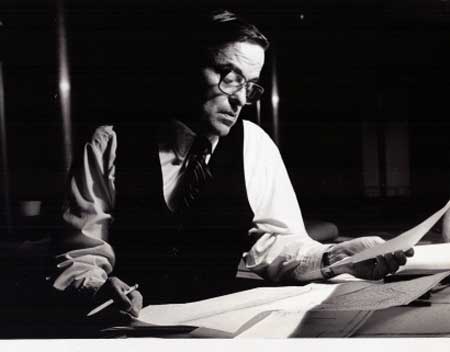 |
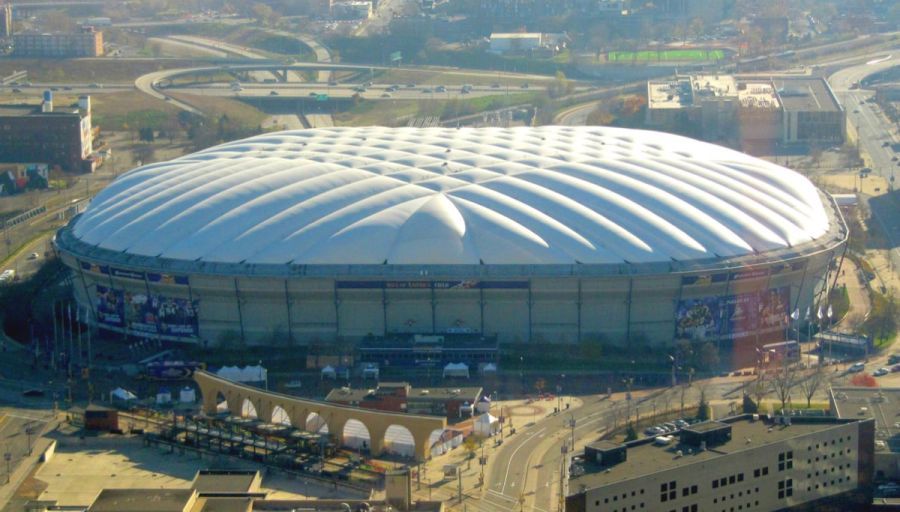 |
World’s fairs are often the site of the newest technologies and designs and Expo ’70, a world’s fair in Osaka, Japan, was no exception. The United States pavilion would be the world’s first air filled structure.
America wanted something different for their pavilion and multiple architects proposed concepts for the structure, but one design beat out all the rest. The architecture firm Davis Brody presented a design, which consisted of a 30-story high, air filled “pumpkin” to serve as the roof of the pavilion. The original idea was to project images and video to the inner surface.
The project was ambitious, to say the least, and congress would only approve half of the expected budget for the project. With fewer funds, the project had to be scaled back and it was up to David to figure out how to make it happen, but with much less money.
David had to concede on the 30-foot height and significantly shortened the structure—but to make it under budget, he had to get creative. To create a structure with a dome shape, Geiger had a stroke of genius. His alternative to a fixed dome was a fabric structure that, when inflated, would create the desired shape and look, but at a fraction of the cost.
The extreme height for the original design wouldn’t have worked anyway. Japanese codes meant the structure would need to be able to withstand typhoon level winds. To meet this, the height of the dome had to be severely restricted by placing cables in a criss-cross pattern across the dome. The rise would be limited to just 23 feet for a dome with a clear span of 262 by 460 feet.
David’s work opened the floodgates, and air-supported structures quickly took off. He would go on to design and build many more famous air structures including the Metrodome in Minneapolis, the Silverdome in Michigan, and several structures for the 1988 Seoul Olympics.
As Sun Tzu said, though, “The flame that burns twice as bright, burns half as long,” and this was true for David. He passed away in 1989 at the age of 54.
David Geiger’s work lives on though, and his influence helped to solidify air-supported structures as a viable alternative to traditional construction. The Farley Group’s air supported structures owe much to David and his early air supported structures. If anything, his domes prepared the world for what would become one of the greatest solutions for creating indoor clear span spaces.
